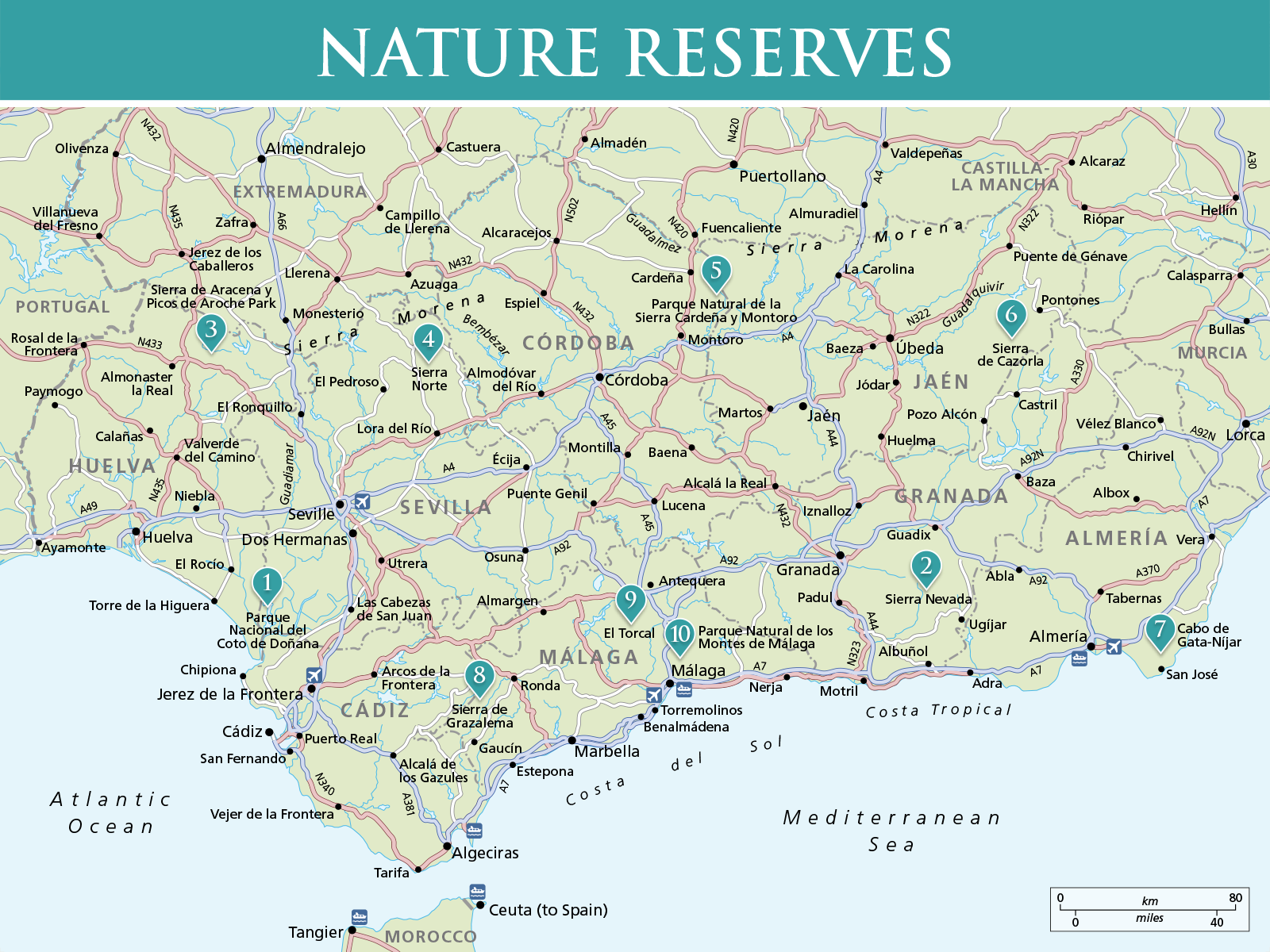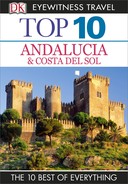
Nature Reserves
1. Parque Nacional del Coto de Donana
These important floodplains are a UNESCO Biospheric Reserve and have been a national park since 1969. The ecosystems include sand dunes, pine and cork forests, marshes, scrubland and riverbank. More than six million birds stop here on their annual migrations and fauna includes the last of the Iberian lynx population (for further details see Parque Nacional del Coto Doñana).
2. Sierra Nevada
Spain’s highest mountains and Europe’s southernmost ski resort can be found in this national park. It’s a wonderful area for hiking, horse-riding and mountain biking (for further details see The Sierra Nevada).
3. Sierra de Aracena y Picos de Aroche Park
This part of the Sierra Morena in Huelva Province is very rural in character; traditions cling tighter here, notably the culinary techniques that give rise to its world-famous ham, jamón ibérico. Again, these forested hills lend themselves to exploration on foot or horseback.
4. Sierra Norte
Sevilla Province’s northern reaches are wild and beautiful. In fact, hiking is a better option than driving in many cases, due to rough, pot-holed roads. The area is a great choice for outdoor enthusiasts of any sort – anglers, hunters and climbers are in their element here.
5. Parque Natural de la Sierra de Cardena y Montoro
This beautiful park is home to prolific forests of holm oak, cork and pine. For the most part gently rolling, it gives way to more dramatic topography in the west. There are plenty of marked hiking trails, and it’s a good place for spotting local fauna.
6. Sierra de Cazorla
In eastern Jaén Province, this vast and enormously diverse park is home to some 1,300 known species of flora, including 20 that are unique to the zone. Steep cliffs, deep gorges and an intricate pattern of rivers, lakes and streams typify the terrain. The landscape offers plenty of walking opportunities along marked trails.
7. Cabo de Gata-Nijar
In Almería Province a stretch of pristine coastline has been set aside as a nature reserve, with towering rocks setting off beaches and coves. The semi-desert massif was designated a UNESCO Biosphere Reserve in 1997. The zone is excellent for scuba-diving (for further details see Cabo de Gata).
8. Sierra de Grazalema
Some 132,200 acres of verdant wilderness were designated a UNESCO Biosphere Reserve in 1984. Access is strictly controlled and is only possible on foot.
9. El Torcal
Málaga Province’s most dramatic natural sight is this limestone massif, carved by the weather over countless millennia into bizarre forms. It’s a popular destination for hikers and climbers.
10. Parque Natural de los Montes de Malaga
Most of this park was planted to cloak Málaga’s once barren heights so as to prevent the seasonal flooding the city experienced for several centuries. Just 30-minutes’ drive from town, it’s a fine place for hiking and biking, with colour-coded trails taking you through a land of gorges, forests and valleys.
